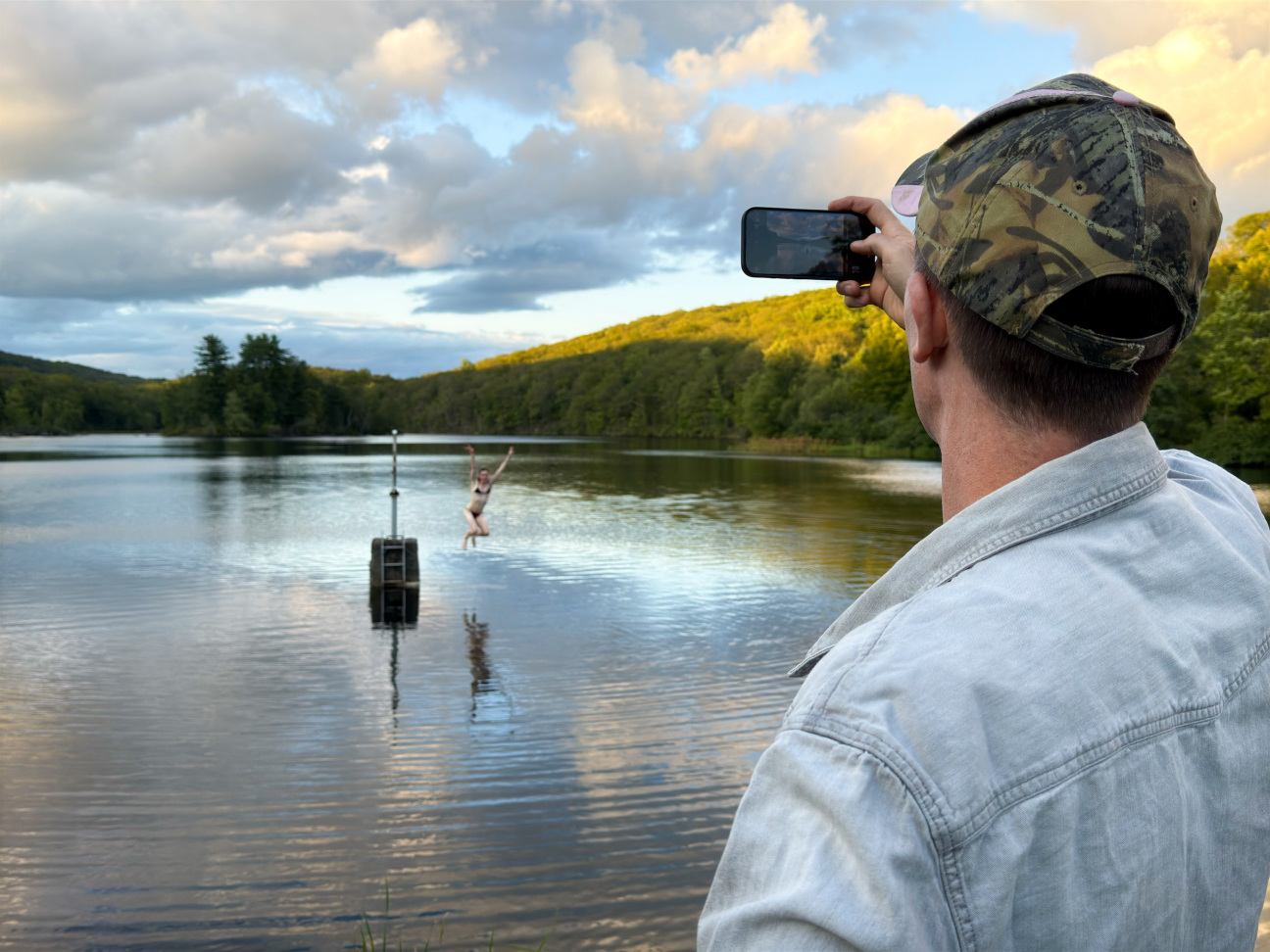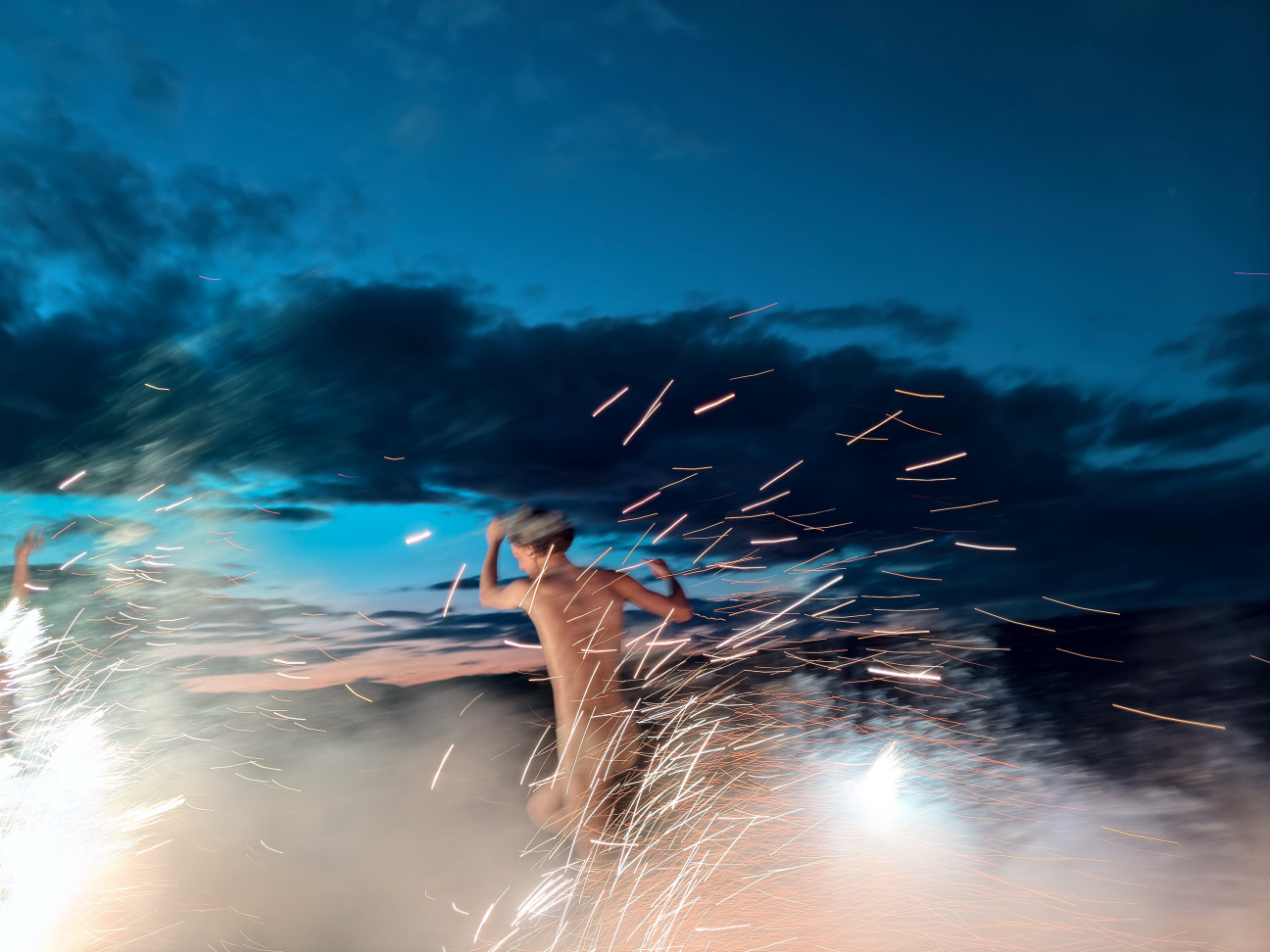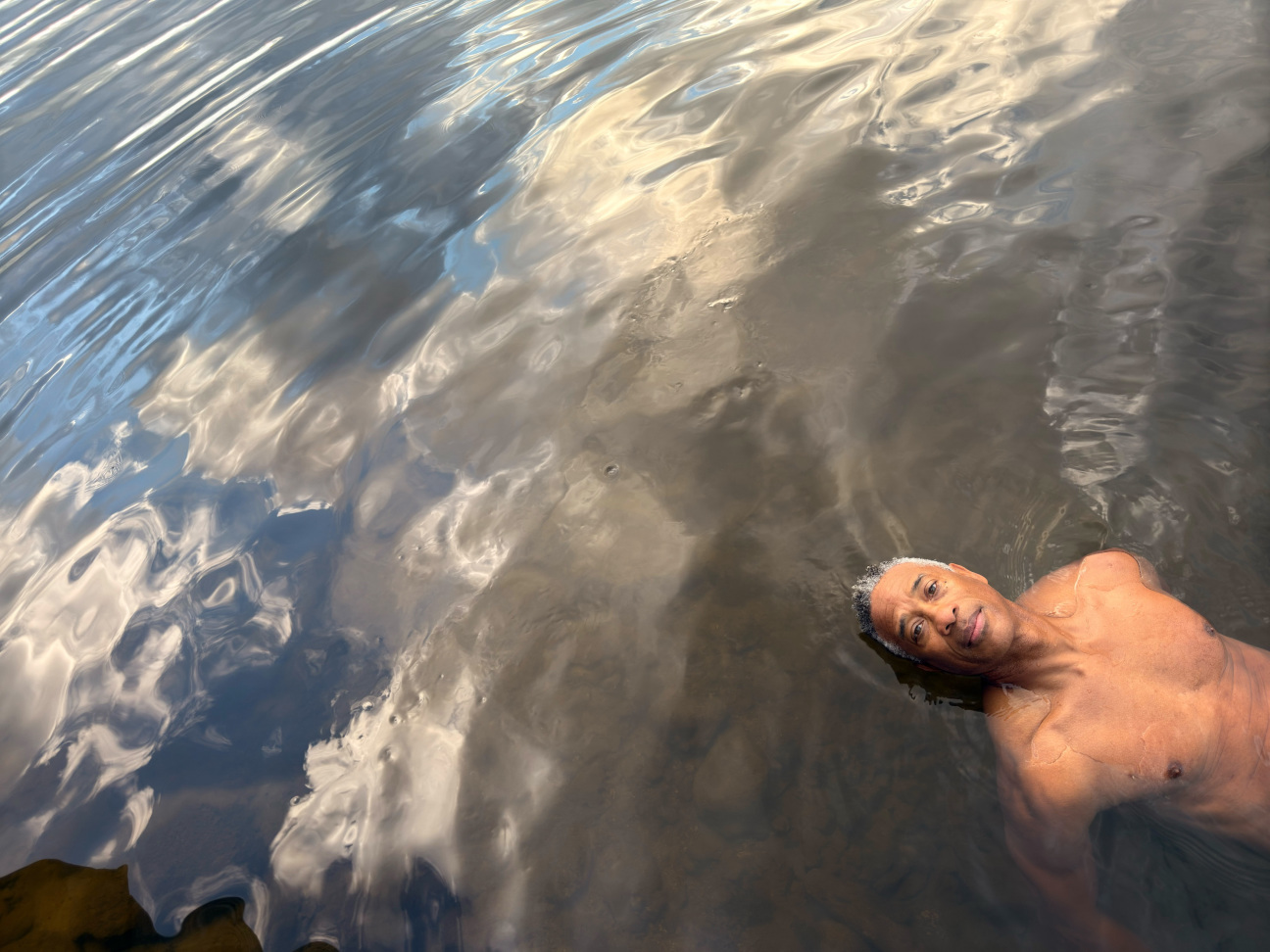
There are few photographers as synonymous with youth as Ryan McGinley, yet his work has evolved aesthetically, conceptually, and technically since his breakout solo show at the Whitney Museum in 2003. Though he still shoots analog, McGinley, like most photographers, has embraced the versatility and convenience of digital and was among the first to start using an iPhone for his work.
The image-maker recently spent a day in Cold Spring with some close friends testing out the new iPhone 16 Pro Max, the results of which were on view last week as part of “Chasing the Light,” a one-day exhibition that took place in New York, London, and Shanghai. Below, McGinley reflects on two decades of image-making, what has changed, and what hasn;t
CULTURED: When did you start shooting on a phone or digitally in general?
Ryan McGinley: Really early on. I got into photography through skateboarding. I would leave my house in New Jersey and come into New York and film my friends at Astor Place, Union Square, or the Brooklyn Bridge. I would be the one on my board, with my camera very low to the ground and with a fisheye lens so you could get everything. We would do tricks in repetition, trying to get three or four tricks in a row so we could make videotapes to get sponsored.
CULTURED: How is your practice different when you're shooting digitally versus analog?
McGinley: Digitally you're not thinking about how much a roll of film costs—there's a lot more freedom there. But it works both ways. It's nice to have film and to really compose your shot, but I've actually never shot like that. I always shoot a lot, and one of my strong points as a photographer is editing and finding the moment that feels the most authentic. So even prior to shooting digitally, I shot quite a lot. I've been rocking with the iPhone since it came out. I remember I was on a road trip in 2008 in San Francisco and in that line to get my iPhone. Prior to that, I was DJing with two iPods.

CULTURED: When you started out, you were shooting on film and super prolific. How were you able to afford all of that film when you were so young?
McGinley: I was hustling, you know, I was doing the New York hustle. I was working for set designers, I was a bike messenger, I was working all sorts of odd jobs: bar-backing in the East Village, at gay clubs, in nightlife. It's so funny when I see people now, they're always like, "Man, I remember when I gave you that, like, $150 check, you ran straight to Adorama or B&H, and went and bought film with it, that was so cool." I would buy expired film at Adorama. And when I was still in school, I would sneak into the Parsons darkroom once I had accumulated 50 or 100 rolls and make contact sheets with a box of photo paper. It's interesting to see how the kids now sort of fetishize using film.
CULTURED: Your work is very associated with youth culture, but over the years it has evolved. How has your perspective on the idea of youth shifted?
McGinley: When I was younger, I had so many mentors that really supported me and guided me. Now that I'm older and I’ve had 20 years in the game, it's amazing to be a mentor to a younger generation of photographers, but I also realize that I'm learning as much from them, if not even more than they might be learning from me. I think that's something you only gain with age and perspective.

CULTURED: Are there any young photographers that you're learning from that you'd like to give a shout out to?
McGinley: Yeah, of course. Last night, we had Quil Lemons with us. Quil and I have been friends now for about six or seven years. He's a young photographer from Philly, he lives in New York, and I think that his eye, his perspective, just like his essence, is very exciting.
CULTURED: There's an element of capturing New York in your early work, but obviously the city itself has changed a lot. How has your relationship to the city changed?
McGinley: I've been living in New York for 25 years now, and when I came here, all I wanted to do was just be here and be on the street and never leave. I was so intoxicated by the bright lights and big city and all the stuff that happens here. There was a moment where I started to become known for photographing in New York, in a tradition like many photographers, of documenting my friends and documenting the city. And then, like any artist, I realized I needed to move on. That's when I started traveling the United States and doing so many road trips.
One of the things that came out of the pandemic was when the protests happened, I was back on the streets with my crew, especially the queer crew. It was back to basics with me and my camera, and a group of people that I love, standing behind issues I think are important. The city was like a character again. To be on the street for like a year and a half, day in and day out, going through every neighborhood really felt like a return to the city that I love.

CULTURED: Can you talk about your relationship to beauty and its role in your work?
McGinley: In my early work, beauty was a form of rebellion and a way of discovering my queerness. When I think back to the work that I was making when I was very young, it was what I couldn't say, but I was able to put it in my work and have a picture of me and one of my partners at the time, or a downtown community. That felt so beautiful to me. To create that world and shape it through the camera and through editing images, and using New York as a background and finding light. When I was able to leave New York and start to do these long road trips, I really found beauty in the United States and in the landscape and things I had seen in Ansel Adams photographs, or pictures where I just thought, Wow, I can't believe I'm at this place, and I'm with this great group of people. I believe in beauty. I'm a firm believer. I think that beauty is joy, right? I always want more joy in my life, and I always stand behind what I find beautiful.
CULTURED: What was the concept for the works that were included in “Chasing the Light”?
McGinley: We had five different models I've been working with over the last few years. We got everyone together: the choreographer Ashley Rucker; the photographer Richard Stuart Perkins who is also an amazing model; a musician named Bobby, who goes by Rentboy; Cleo, who is known as the queer internet heartthrob and is also an amazing activist; and a fashion designer named Max Donahue. This is a crew I've worked with in many different aspects of my photography. We went up to this beautiful farm called Glenwood, which is in Cold Spring and created a lot of energy and movement, and used the elements—earth, wind, air, fire—and we had some beautiful sparklers. I brought a trampoline with us, and people were flying through the air and capturing it all on the camera, on the phone. I love all aspects of using that camera: I've used it in exhibitions before. Maybe seven years ago, I made a book for my partner of the first two years of our honeymoon period, and all the photos were from the camera on the iPhone. The beautiful thing about using the phone is you have all those lenses available to use and you can switch so easily. With my other cameras sometimes you lose the moment because you have to switch a lens or switch a camera.










 in your life?
in your life?

